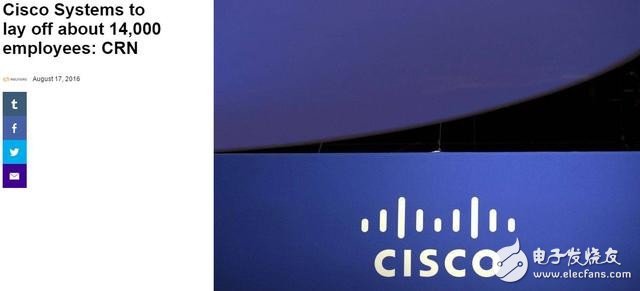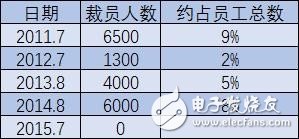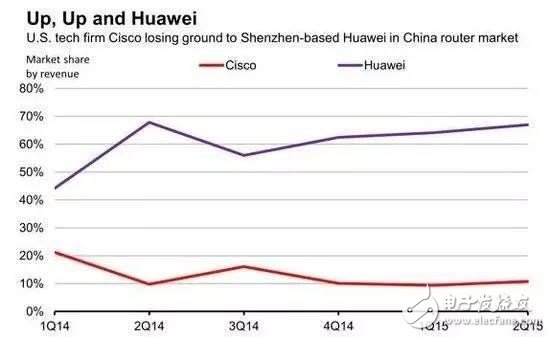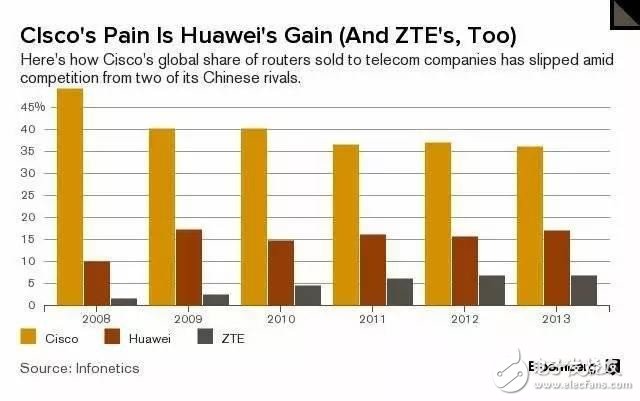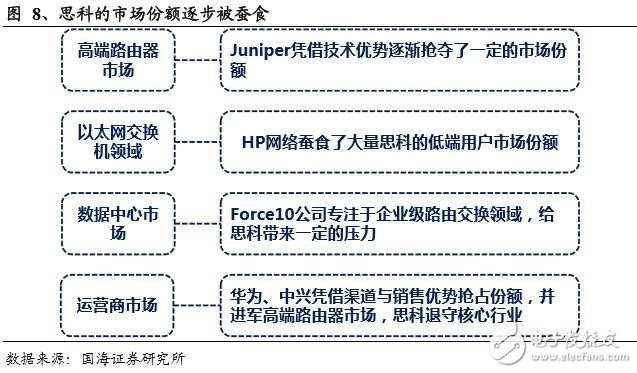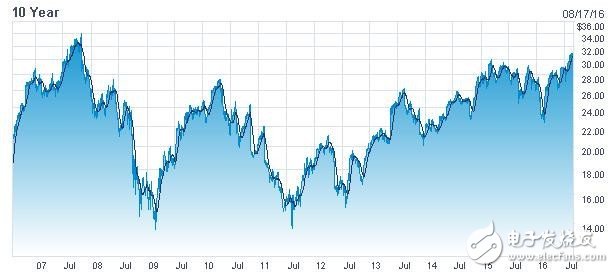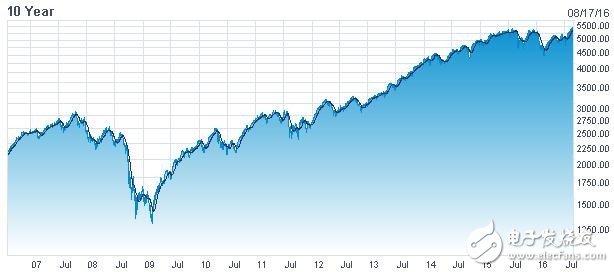As the world leader in telecommunications equipment, Huawei's strongest competitor, and one of the most successful companies in the United States, Cisco has been synonymous with "Internet, Web Applications, Productivity" for more than 20 years. But recently, a news about Cisco surprised the global technology circle: CRN, a technology news website, quoted people familiar with the matter as saying that Cisco will lay off a large number of layoffs, up to 14,000 layoffs, accounting for nearly 20% of its global employees. According to CRN, Cisco is expected to announce a layoff plan in the coming weeks, and the company has already provided employees with multiple early retirement plans. As of April 30, Cisco has about 73,000 employees, such as 14,000 job cuts, which will refresh its record of 6,500 layoffs in 2011, becoming the largest layoff in Cisco's 32-year history. So far, Cisco spokesperson Andrea Duffy has not commented on the report. But I believe many netizens and Xiaobian want to ask: What is Cisco? Eat in the United States, eat in China Cisco announced the "tradition" of the layoffs plan when it released its earnings for the entire fiscal year in the summer. In addition to 2015, when Chuck Robbins was promoted to the new CEO in July, Cisco did not announce layoffs, and there were layoffs in 2011-2014. Cisco layoffs over the years CRN News said that Cisco is preparing to announce its fourth quarter financial report after the close of tomorrow. However, analysts expect Cisco's fourth-quarter revenue to fall 2% year-on-year to $12.6 billion. So, is the layoffs because of "poor performance?" In fact, this is not the case. Xiaobian has found that Cisco's sales growth in recent years is not fast, but it is stable. However, looking closely at Cisco's fiscal year 2015 earnings report, Xiaobian noticed an interesting detail. According to Cisco's financial report, sales (operating income) increased by US$2.1 billion in FY2015 compared to FY2014, but US$1.9 billion of this growth came from the US. At the same time, sales from Asia Pacific and Japan, China (APJC, Asia Pacific, Japan, and China) fell by 200 million US dollars, and sales in China plummeted 21%! In the Chinese market, Cisco faces the most competitive pressure. In the annual report, Cisco has not avoided this point. Cisco said: The company has experienced a severe price war in Asia, especially in China, and this competition will continue. When talking about the Cisco and China markets, they have to mention its old rival, Huawei. The great collapse of Cisco in the Chinese market was not only affected by the “Prism Gate†incident, but also the result of aggressive attacks by local telecom equipment manufacturers such as Huawei and ZTE. Cisco and Huawei's share of the Chinese market According to Sanford Bernstein, Cisco's share of the Chinese router market has halved, while Huawei has jumped from 40% to 70%, and is still growing. More than China, in the global market, Cisco is also under siege by Huawei and ZTE. Michael Howard, principal analyst and co-founder of market research firm InfoneTIcs Research, said the Cisco business market is dominated by Huawei, China's largest network equipment manufacturer. Huawei has expanded in markets such as Asia and Africa, and its products have been favored by customers, narrowing the scope of Cisco's business expansion. Cisco (yellow), Huawei (red), and ZTE's global share (source: Bloomberg) In the $14.6 billion global router market, Huawei has expanded the fastest in the past two years. ZTE’s market share has also improved. And these are the result of eroding Cisco's market share. As the world leader in telecommunications equipment, Huawei's strongest competitor, and one of the most successful companies in the United States, Cisco has almost become synonymous with "Internet, Web Applications, Productivity" for more than 20 years. Flowers in the greenhouse are difficult to open The global market is defeated. The only comfort that Cisco can comfort is that the US is still the world, and this benefits from the unfair trade policy of the United States. According to data from Guohai Securities, the US telecommunications equipment market accounts for more than 50% of the global market, and is the world's largest and highest-profit telecommunications equipment market. At the same time, the US telecom equipment market is also the most closed market in the world. For Chinese companies such as ZTE and Huawei, they have all obstacles to refuse. Cisco relies on such protection to enjoy the advantages of exclusive US market. If ZTE and Huawei can enter the US as they enter the European market, can Cisco hold its base camp? But such protection does not make a strong Cisco. The days of being too comfortable will only make its living space smaller and smaller, and Cisco's market position in various fields is declining: More importantly, Cisco has also shown signs of fatigue in technology research and development related to future potential. As of the end of 2015, Huawei had a total of 170,000 employees worldwide, including 45% of R&D employees. In recent years, media reports show that the proportion of R&D employees in Cisco is around 30%. From the perspective of R&D investment, Huawei is higher than Cisco in both total and proportion. Comparison between Cisco and Huawei in R&D investment (unit: billion US dollars) In 2002, Cisco filed a lawsuit against Huawei, arguing that Huawei routers copied Cisco products. After more than ten years, Huawei has become a global communications equipment giant, and its achievements are obvious to all. Former Cisco CEO Chambers has been blunt, the biggest competitor is Huawei. Cisco, which is not enough, is now trading at a low price in 2007, while the Nasdaq index, which is dominated by technology stocks, has already surpassed the highs before the 2008 financial crisis. Cisco's stock price changes in the past 10 years Nasdaq changes in 10 years For the layoffs, Cisco gave the reason: the company is trying to transform, from hardware companies to software-centric companies. But can it really transform successfully? 1. Why fiberglass antenna is not suitable for indoor use? A: Many people may have noticed that international brands such as Linksys or DLink typically use only 7dB, 5dB and 2dB antennas, while 9dB or higher gain indoor omnidirectional antennas are rarely seen in the market. As far as we know, the 7dB antenna has fully met the requirements of indoor use. The antenna above 7dB has been used. Due to the small Angle, it cannot give full play to its advantages. Therefore, we recommend using an omnidirectional antenna above 9dB for outdoor use. As for someone, it is good to say indoor wall effect, this statement is unable to prove, also need not believe too much. 2. Why are omnidirectional antennas and perpendicular angles called? A: Generally speaking, an omnidirectional antenna is an antenna with a horizontal radiation Angle of 360 degrees and a vertical sector. The Angle is usually around 6 ~ 15 degrees. The higher the gain, the smaller the vertical Angle. For example, the radiation Angle of the 9dB antenna can be about 14 degrees, while the radiation Angle of the FRP antenna can be about 8 degrees as the limit 868MHZ Fiber Glass Antenna,915MHZ Fiber Glass Antenna,LoRa Gateway Antenna,Wifi Fiberglass Antenna,Fiber Glass Antenna Yetnorson Antenna Co., Ltd. , https://www.yetnorson.com